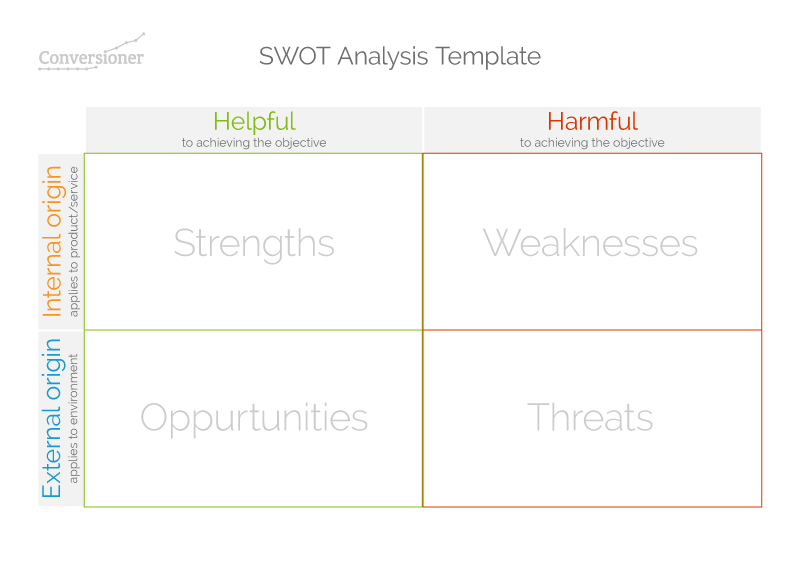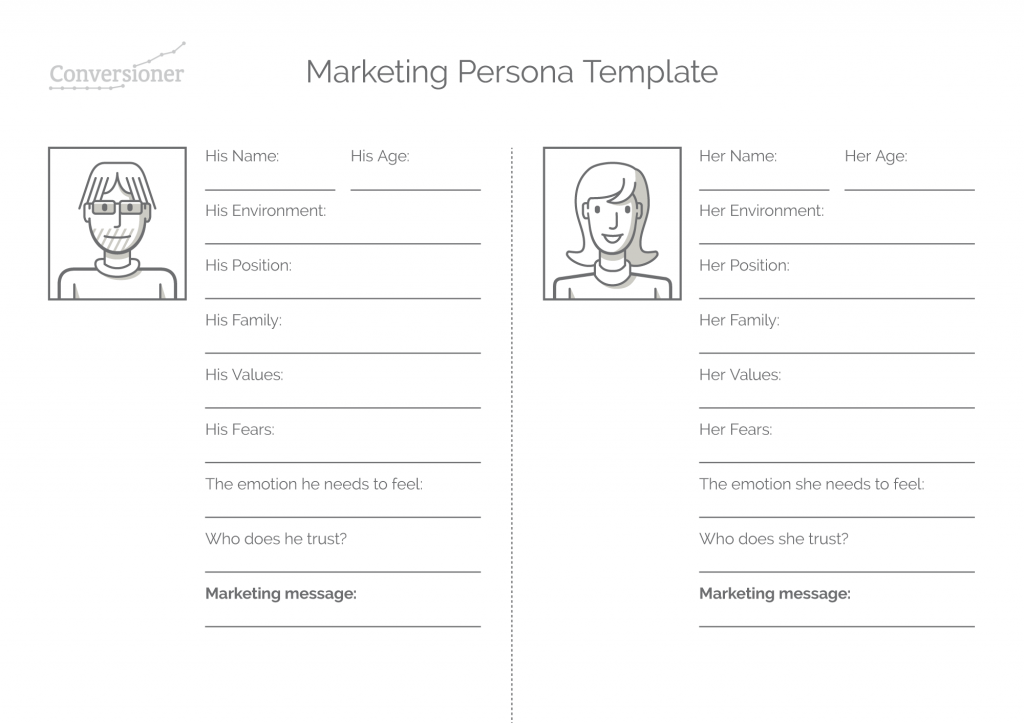Step-By-Step Guide To Creating A Marketing Persona
Do you know the answers to these questions about your customers?
- What is their greatest dream in life?
- What upsets them or makes them happy?
- What are their values and fears?
- What are their hobbies?
The foundation of marketing is the process of identifying, meeting, and satisfying customer wants and needs. In order to meet their needs you must have a true understanding of your customers, their emotional triggers and what drives them.

The first step in achieving this and a very helpful one is creating customer personas. Understanding your customer and the pain you’re solving will allow you to create a better user journey and product for them. Personas should be used as a tool to summarize & communicate research results, building personas can help improve the way you solve problems and speak to your customers.
Taking the first steps with marketing personas
Personas are fictional characters, representing slices of your customer base. They are created with a combination of raw data, educated guesses, interviews, and research. These semi-fictional representations of your prototypical customer are developed based on customer demographics, along with your own understanding of their motivations and needs.
Why Create Marketing Personas?
Marketing personas provide tremendous insight and structure for your marketing strategy. With personas you can be more strategic in catering to each segment of your audience, internalize the customer you are trying to attract, and relate to them as human beings. Personas can help you:
- Determine where to focus your time
- Guide product development
- Clearly articulate your customer’s challenges and pain points
- Target your marketing placement where your customer does his or her research
- Tailor marketing messages that speak more directly to customer needs
- Synchronize your team’s efforts and get everyone on the same page.
Creating marketing personas is well worth the time, as it will allow you to attract the most valuable visitors, leads, and customers to your business.
Laying The Groundwork For Your Persona
1. Competitor Research
The competitor research will give us a more in-depth understanding of the market we’re in, our audience and of course, our competition. The competitor research isn’t meant as a means of copying them but as a means of learning more about your surroundings and will help with your next step – the SWOT.
2. SWOT Analysis
Before you start digging into your marketing personas and identifying your emotional triggers you’ll have to back up a few steps and analyze your opportunities, company and product strengths, immediate threats and weaknesses. The SWOT is one of the oldest tools in marketing, allowing teams to build compelling strategies. Strengths and weaknesses are to do with your product and business, while opportunities and threats are usually to do with external elements such as market trends, technology and competitors.

3. Conduct Interviews
To create your marketing personas you should conduct interviews with customers, prospects, and members of your sales and customer service teams. Both internal and external interviews will help to establish a well-rounded picture of who your core customers are.
Interviewing your team will allow for a deeper understanding of how they see the customers, what they encounter and the obstacles they face. Interviewing customers can paint a great picture as to how your customers view you and your product.
During the interview process with your team, collect the following:
- Basic demographic details about your customer
- Where and how the team conducts research
- Most common customer service calls and issues
- Common objections sales face during the selling process
While interviewing customers, collect the following data:
- Key job responsibilities, likes or dislikes about their job
- Quotes that make your personas come to life
- Their role in the purchasing process
- Challenges and pain points, and the emotions which accompany those challenges
- Primary or secondary goals and aspirations
- Their position – what do they do?
4. Collect user data and site analytics
The most basic resource that can serve as a treasure trove of customer data is your website’s analytics. You can see where visitors came from, what keywords they used to arrive at your site, and how much time they spent there. Tracking demographic information allows you to see the age, gender, and interests of your customers. This information can reveal the actions that led customers to your site and the tools they used to get there.

5. Run Surveys
Sending out a survey is great way to collect demographic information about your customers that they may not feel comfortable sharing in an interview. You can also reach out to customers via social media. A good resource for running surveys and polls can be found on Violeta’s post sharing some original tips for collecting customer feedback.
6. Create a Marketing Persona Template
Below is a template of what a typical marketing persona would look like. Ideally you would have three to five of these fictional personas representing various slices of your customer demographics. Using three to five personas is broad enough to cover the majority of your customer base, but also targeted enough to still have the value of specificity.
Creating your Marketing Persona
Once you’ve finished laying the groundwork for your personas you should be able to fill in the points in the template:
1. Give your persona a name
By giving your persona a name you help bring it to life for yourself and others in your organization. In past experiences I’ve found that once we gave the persona a name the entire team tends to address this persona in all our conversations.
Used wisely, a persona can function just as any other person in the meeting while making a decision. The name allows us to address “Jennifer’s” specific issues that are related directly to her, and address “Ian’s” with a complete understanding of everyone in the room.
2. Give them a job, role, interest group, or education level
Depending on your industry or the type of product or service you are selling you might find that your customers fit into certain groups. If your selling B2B you might want to break your personas out into one-man shops, small business owners, or c-level executives. These groups will likely come out of your customer interviews and surveys.
3. Add Goals and Challenges, Values and Fears
During your interviews you will want to capture the primary and secondary goals of your customers, and their values and their fears. This is where you can get a clear understanding of what truly drives your customers and the problems they face everyday. Customer service and your sales team should have a pretty interesting take on this. In addition, another way to start here is go back to the basics: Why did you or your manager start the company? What pain were you trying to solve? The following questions will help you determine your persona’s values, fears, goals and challenges:
- What keeps them up at night?
- What are the key challenges and pain points they are facing?
- Who and where do they turn to for advice and information?
- How do they go about change?
- What’s impeding or speeding their need to change?
- How is the thing we want to do meeting their needs?
- What do they want to feel once they’ve purchased your product/service?
4. Tailor Your Marketing Message
Once you have a sense of your customers’ backgrounds, who they are, and what challenges they face you can begin. The message should be a clear and concise message that describes your product and the emotional outcome to this particular customer. This message will then filter down into marketing and communications tailored to “Jennifer,” and not to “Ian.”
Mapping The User Journey
Now that you’ve defined your marketing personas, you can create a user journey that will convert these personas into customers. A user journey details a buyer’s decision-making process during a purchase. This allows you to:
- Understand the process your customers go through when considering your product or service
- Develop a marketing communication strategy that speaks directly to customers, regardless of their stage in the buying journey
Your next steps
Like any element of your marketing, you shouldn’t dive into creating marketing personas without a clear strategy. Persona marketing isn’t about creating content for its own sake—it’s about finding new ways of engaging prospective buyers in ways that speak directly to them. An additional bonus here, is getting your team on board with your marketing strategy. In order to do that effectively, you need a plan that reflects who your customers are, their goals, values, and top concerns.
This will allow you to create a marketing strategy that aligns with those concerns throughout every stage of the buying process. Have you found personas useful in your own marketing? Let us know in the comments.



Pingback: 25 Marketing Resources Driving Inbound Traffic Around the Web: May 29th – UpCity()
Pingback: How understanding your customer journey helps attract more customers – TrenDemon Blog()
Pingback: AMA with Talia Wolf, Conversioner.com()
Pingback: New Post - The Craft -()
Pingback: How to Utilize The Psychology of Persuasion to Increase Conversion Rates | Tax Twerk()
Pingback: How to Utilize The Psychology of Persuasion to Increase Conversion Rates - Internet Business Library()
Pingback: 22digitals()
Pingback: 6 Steps to Content Marketing Success()
Pingback: 49 Foolproof Optimization Ideas To Increase Online Sales()
Pingback: How to Consistently Grow Your Conversion Rates with Emotional Targeting()
Pingback: Speaking with Emotion: How To Increase Conversions with Words()
Pingback: 7 Tips for Building a Better Relationship with Your Customers()